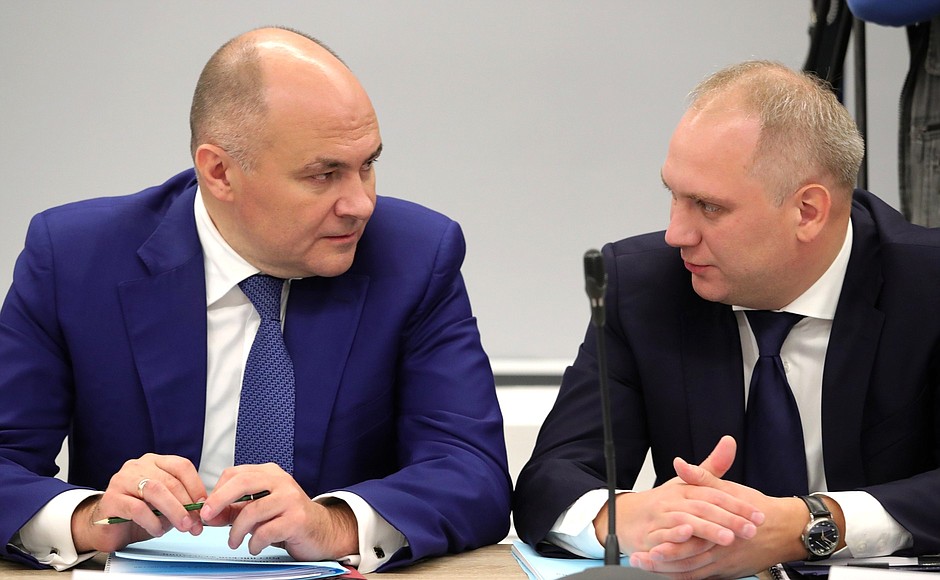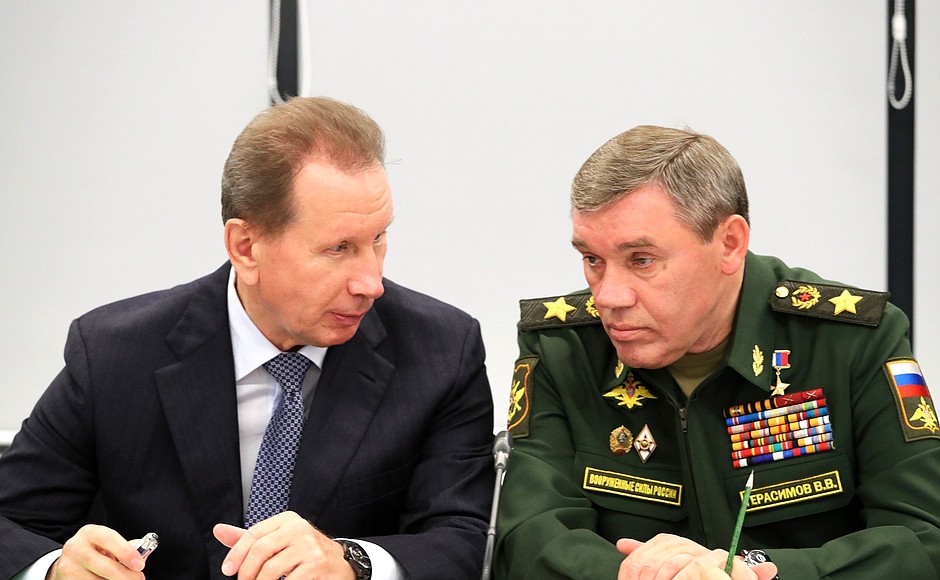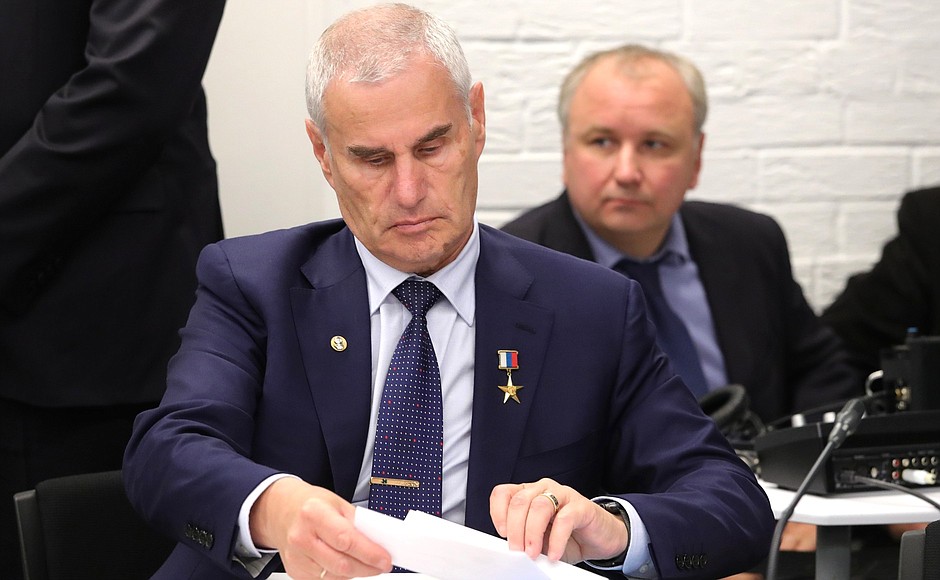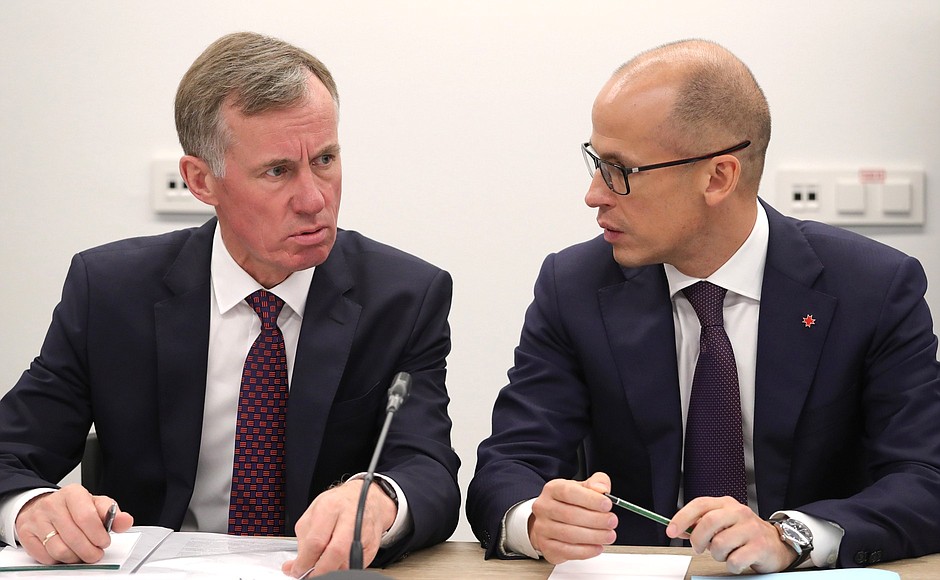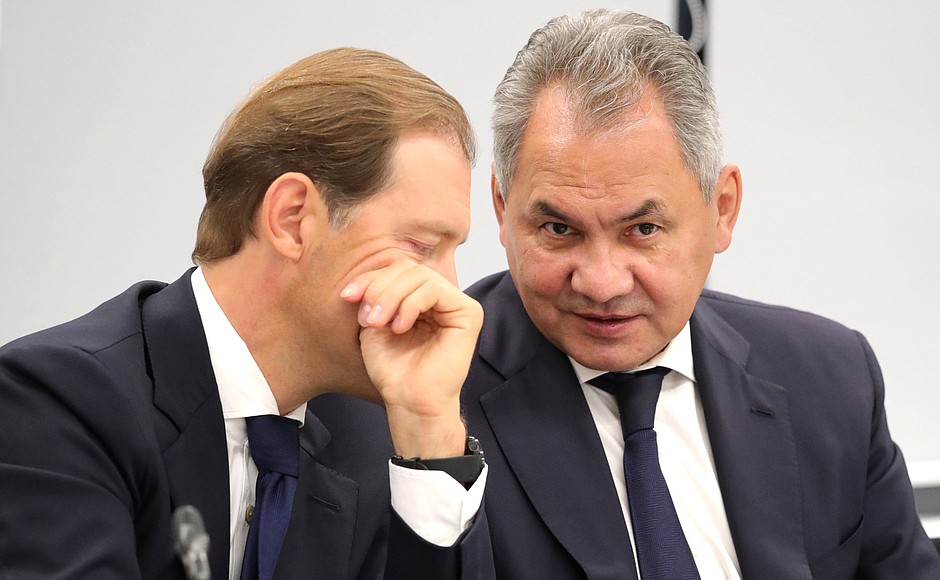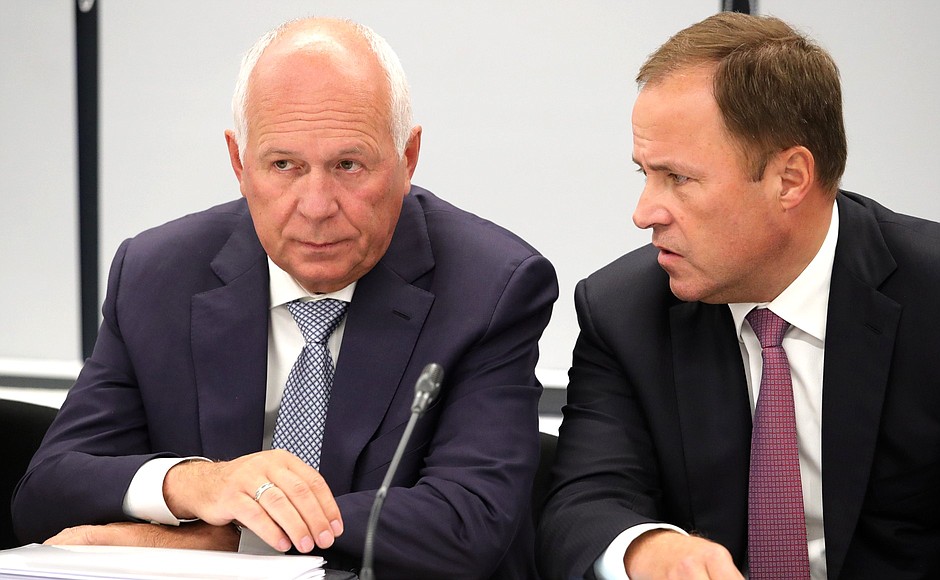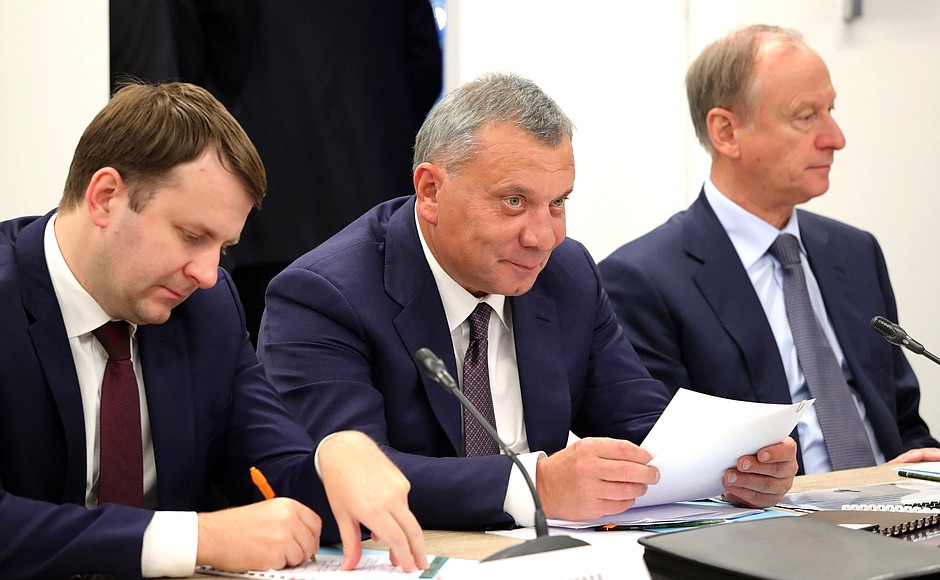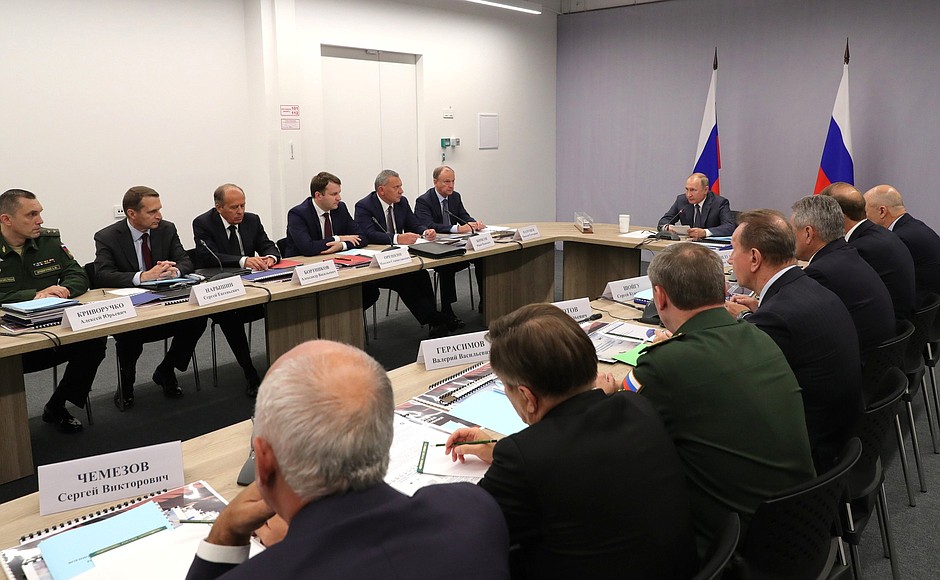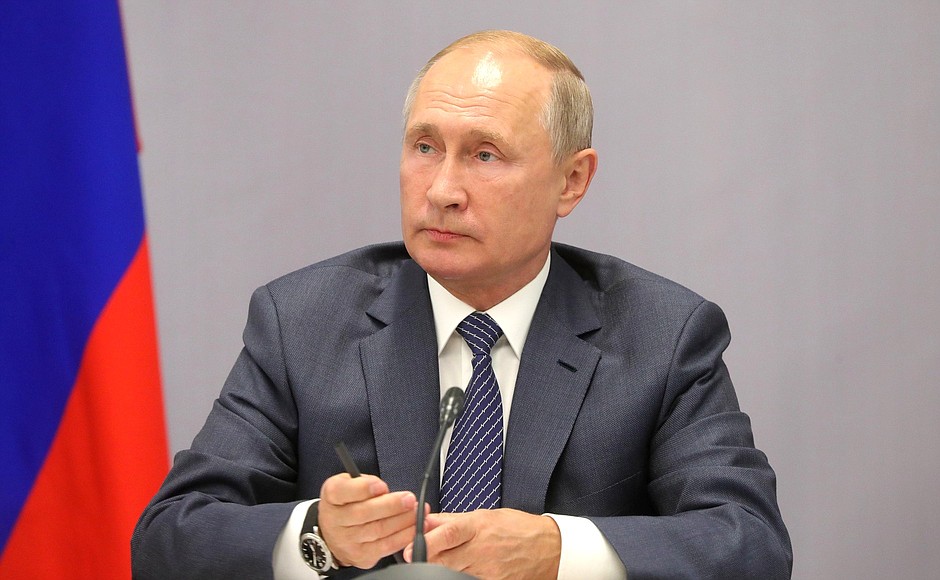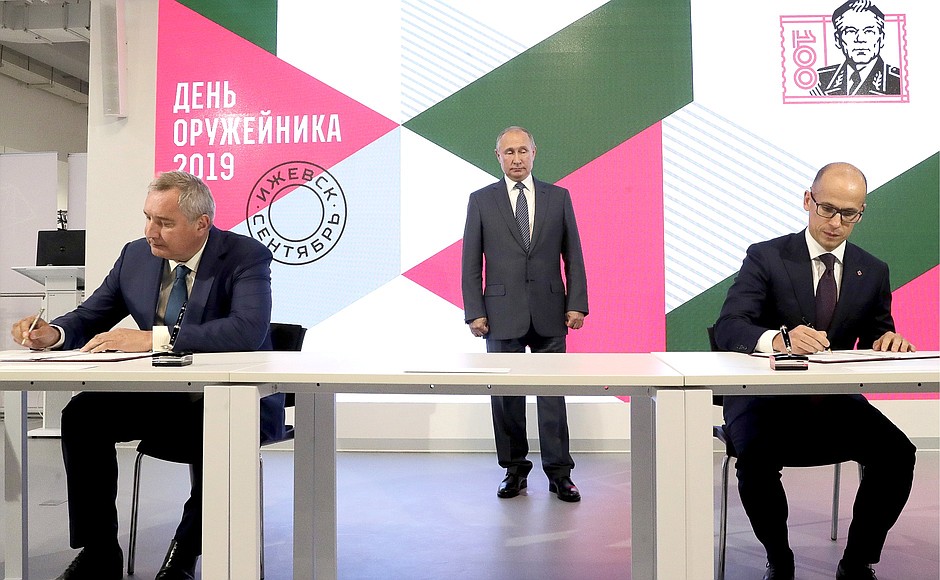After the meeting, in the presence of the President, the Defence Ministry signed a long-term contract with the Izhevsk Electromechanical Plant Kupol for the delivery of Tor-M2 and Tor-M2DT air defence missiles for the Russian Army; the Government of Udmurtuia signed a cooperation agreement with Roscosmos State Corporation on establishing the Kosmoquantum Laboratory at the Kalashnikov Academy Youth Technology Park.
* * *
Beginning of the Military-Industrial Commission meeting
President of Russia Vladimir Putin: Good afternoon, colleagues.
At this regular Military-Industrial Commission meeting in Izhevsk, one of Russia’s arms capitals, we will discuss key issues of developing the industry’s facilities and enhancing their economic stability and competitiveness.
First, I suggest we focus on implementing the import substitution programme in the defence industry. Let me remind you that this was launched five years ago, and during this time, we have managed to move forward in some areas, in some important areas at any rate.
The share of electronic components in modern arms has increased substantially. The production of engines for Navy helicopters and ships has been organised. I would like to add that soon it will be possible to service engines for An-124 aircraft at Russian plants. Overall, the technological self-sufficiency of over 350 types of arms and equipment has been achieved under the import substitution schedule.
Colleagues, we are marking Gunsmith Day, but right now, we are at a production conference rather than a celebration and for this reason I also have to talk about issues of concern.
See also
This is what I want to say. Practice shows that in a number of cases obvious mistakes were made in planning and organising import substitution. As a result, deadlines for several assignments of the state defence order had to be suspended in 2018. Considering that all our plans to upgrade the army and navy are comprehensive and interlinked, these schedule overruns must be promptly eliminated.
In this context, the Government and the relevant agencies must take additional measures to ensure technological self-sufficiency in military production, including projects in the design stage. Today we will talk about this in detail and meticulously review the issues of concern.
The second issue on the agenda is related to the continuing diversification of the defence industry. To reiterate, the future of defence industry companies and their economic, technical and financial stability, their ability, as we have noted many times, once defence orders are past their peak to cope with their core tasks and to increase the output of competitive civilian products that enjoy demand both on the domestic and foreign markets depends on the effectiveness of actions in this area.
We have discussed this many times. I said that the programme was launched five years ago. This was discussed in Tula in 2016, then twice in Ufa and in Moscow in 2018. I mentioned this in my Address. We have all this in the documents.
I already noted at today's Gunsmith Forum that the share of civilian products in the defence industry totaled nearly 21 percent, 20.9 percent actually, in 2018. This looks good, but, you know, the pace is still not good enough, let me tell you that.
Defence industry companies have announced plans to implement over 400 projects to manufacture such products. Thus, in the coming years, nuclear and diesel icebreakers for the Northern Sea Route as well as cruise and fishing vessels will be built at shipyards that were traditionally used for building Navy ships and products. In 2021, Irkut Corporation plans to begin delivering the MS-21 mainline aircraft.
To reiterate, the opportunities offered by national projects should be widely used in our efforts to diversify manufacturing enterprises. The potential demand for civilian output from defence companies now exceeds 5,500 items.
With earlier issued instructions in mind, I would like to hear today what measures are being taken to encourage the production of civilian output by defence industry companies and to promote this in domestic and foreign markets, how the Government has involved defence industry companies in carrying out national projects, and how things are going with contracting.
I mentioned this when I spoke at the gala meeting: vast amounts of money are allocated in many areas. Defence industry enterprises should get involved and receive these resources. However, in order to receive these resources, it is necessary to make proposals that may be of interest to a variety of industries.
The third item on the agenda concerns the financial recovery of defence contractors. An operational headquarters has been monitoring and controlling the financial condition of defence contractors since 2015. It has become clear that the arising problems are largely related to big loan portfolios or a heavy debt load, in simpler terms.
We have repeatedly discussed this issue, for instance, at meetings in Moscow and at integrated conferences on the development of the Army and Navy in Sochi. We determined that the shortage of capital is the result of many things including under-utilised capacity due to reductions in orders and the costs of financing R&D; research expenses were not accounted for in the planning documents.
I would like to return to these issues today and listen to specific proposals on the systematic improvement of the situation and on consolidating the financial position of contractors, especially strategically important ones.
We also have to allocate authority to the heads of priority technological areas. Fourteen of them have already been appointed. Today we will discuss another four candidates.
These managers and organisers are receiving serious authority and their responsibility is also high. They must play a key role in developing breakthrough technologies for the production of advanced arms and equipment prototypes that will determine the future image of the Russian Army and Navy.
Another important event will take place after this meeting. The Izhevsk Plant Kupol and the Defence Ministry will sign two long-term contracts worth a total of almost 100 billion rubles. Under these contracts, Tor air defence missile systems – the Tor-M2 and Tor-M2DT – will be produced and delivered to the Army in 2019–2027. Implementation of these contracts will strengthen the position of the plant, and these new types of arms will be an important contribution to arming Russian Aerospace Forces.
Let us discuss the proposed issues.
<…>
